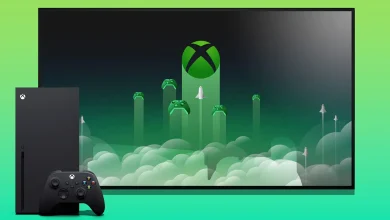Cloud Gaming: Revolutionizing Interactive Entertainment
Revolutionizing Interactive Entertainment

Introduction:
Cloud gaming represents a paradigm shift in the way we play and experience interactive entertainment. By leveraging the power of cloud computing, this innovative technology enables players to access and play high-quality games on a wide range of devices, from smartphones and tablets to smart TVs and low-end PCs. This article explores the evolution, advantages, challenges, and future prospects of cloud gaming, and its transformative impact on the gaming industry.
Evolution of Cloud Gaming:
The concept of cloud gaming emerged in the early 2000s, driven by advancements in internet infrastructure and cloud computing technology. Companies like OnLive and Gaikai pioneered the early efforts in cloud gaming, offering streaming services that allowed players to play games remotely over the internet. However, these early attempts faced technical limitations, including latency issues, bandwidth constraints, and limited game libraries, which hindered widespread adoption.
Advancements in Cloud Infrastructure:
In recent years, advancements in cloud infrastructure, networking technology, and streaming protocols have revitalized interest in cloud gaming. Major tech companies such as Google, Microsoft, Sony, and NVIDIA have entered the fray, launching cloud gaming platforms with the promise of high-quality gaming experiences delivered directly to players’ devices. These platforms leverage data centers equipped with powerful GPUs, high-speed networking, and low-latency streaming technology to provide seamless gameplay experiences with minimal input lag and visual artifacts.
Accessibility and Convenience:
One of the primary advantages of cloud gaming is its accessibility and convenience. Unlike traditional gaming, which requires expensive hardware and lengthy downloads, cloud gaming allows players to instantly access and play games without the need for specialized hardware or installations. By streaming games directly from the cloud, players can enjoy high-quality gaming experiences on a wide range of devices, from smartphones and tablets to smart TVs and web browsers, making gaming more accessible and inclusive than ever before.
Cross-Platform Compatibility:
Cloud gaming also offers cross-platform compatibility, enabling players to seamlessly transition between different devices while maintaining their progress and preferences. Whether playing on a smartphone during a commute, a tablet at home, or a PC at work, players can pick up where they left off without any interruption. Additionally, cloud gaming platforms often support cross-save functionality, allowing players to synchronize their game saves and progress across multiple devices, further enhancing the flexibility and convenience of cloud gaming.
Expanding Game Libraries and Subscription Models:
Cloud gaming platforms boast expansive game libraries with thousands of titles spanning various genres, from AAA blockbusters to indie gems. In addition to purchasing individual games, many cloud gaming services offer subscription-based models, providing access to a curated selection of games for a fixed monthly fee. These subscription services offer value and convenience to players, allowing them to explore a diverse catalog of games without the upfront cost of purchasing individual titles.
Challenges and Considerations:
Despite its many advantages, cloud gaming still faces several challenges and considerations. Latency, bandwidth, and network stability remain key concerns, particularly for fast-paced and competitive multiplayer games where split-second reactions are critical. Additionally, concerns about data privacy, security, and ownership rights may deter some players from fully embracing cloud gaming, as streaming services rely on remote servers to host and deliver game content.
Future Prospects and Industry Impact:
Despite the challenges, the future of cloud gaming appears bright, with continued advancements in cloud infrastructure, networking technology, and streaming protocols poised to further enhance the quality and accessibility of gaming experiences. As more players embrace cloud gaming, developers and publishers are likely to invest in cloud-native game development, creating experiences tailored specifically for streaming platforms. Furthermore, cloud gaming has the potential to democratize access to gaming, making high-quality experiences available to players worldwide, regardless of their hardware specifications or geographic location.
Conclusion:
Cloud gaming represents a revolution in interactive entertainment, offering players unprecedented access, convenience, and flexibility. By harnessing the power of cloud computing, this innovative technology is reshaping the gaming industry, expanding the reach of gaming to new audiences and redefining the way we play, connect, and experience interactive entertainment. As technology continues to evolve and cloud gaming platforms mature, the future of gaming promises to be more accessible, inclusive, and immersive than ever before.
The Evolution of Cloud Gaming: From Concept to Revolution
Introduction:
Cloud gaming has undergone a remarkable evolution since its inception, transforming from a niche concept into a disruptive force that is reshaping the gaming industry. This article explores the evolutionary journey of cloud gaming, tracing its origins, key milestones, and the transformative impact it has had on the way we play and experience video games.
Origins of Cloud Gaming:
The concept of cloud gaming can be traced back to the early 2000s, when visionary pioneers began exploring the idea of streaming games over the internet. Companies like OnLive and Gaikai were among the first to experiment with cloud gaming technology, offering streaming services that allowed players to play games remotely without the need for dedicated gaming hardware. However, these early attempts faced significant technical challenges, including latency issues, bandwidth limitations, and a limited selection of available games, which hindered widespread adoption.
Advancements in Technology:
In the years that followed, advancements in cloud infrastructure, networking technology, and streaming protocols laid the foundation for the resurgence of cloud gaming. The proliferation of high-speed internet connections, coupled with the widespread adoption of cloud computing services, provided the necessary infrastructure to support high-quality game streaming experiences. Additionally, innovations in video compression algorithms, latency reduction techniques, and adaptive streaming technology helped to mitigate the technical challenges associated with cloud gaming, paving the way for more seamless and responsive gameplay experiences.
Entrance of Major Players:
The resurgence of cloud gaming gained momentum with the entrance of major tech companies into the space. Google, Microsoft, Sony, and NVIDIA were among the industry giants that recognized the potential of cloud gaming and launched their own cloud gaming platforms. Google Stadia, launched in 2019, promised to deliver AAA gaming experiences directly to players’ devices via streaming, while Microsoft’s Project xCloud (now known as Xbox Cloud Gaming) offered Xbox games on a wide range of devices. Sony’s PlayStation Now and NVIDIA’s GeForce Now also entered the fray, offering subscription-based access to a library of games streamed from the cloud.
Accessibility and Convenience:
One of the primary advantages of cloud gaming is its accessibility and convenience. Unlike traditional gaming, which requires expensive hardware and lengthy downloads, cloud gaming allows players to instantly access and play games on a wide range of devices, including smartphones, tablets, smart TVs, and low-end PCs. By streaming games directly from the cloud, players can enjoy high-quality gaming experiences without the need for specialized hardware or installations, making gaming more accessible and inclusive than ever before.
Cross-Platform Compatibility:
Cloud gaming offers cross-platform compatibility, enabling players to seamlessly transition between different devices while maintaining their progress and preferences. Whether playing on a smartphone, tablet, or PC, players can pick up where they left off without any interruption. Additionally, cloud gaming platforms often support cross-save functionality, allowing players to synchronize their game saves and progress across multiple devices, further enhancing the flexibility and convenience of cloud gaming.
Expanding Game Libraries and Subscription Models:
Cloud gaming platforms boast expansive game libraries with thousands of titles spanning various genres, from AAA blockbusters to indie gems. In addition to purchasing individual games, many cloud gaming services offer subscription-based models, providing access to a curated selection of games for a fixed monthly fee. These subscription services offer value and convenience to players, allowing them to explore a diverse catalog of games without the upfront cost of purchasing individual titles.
Challenges and Considerations:
Despite its many advantages, cloud gaming still faces several challenges and considerations. Latency, bandwidth, and network stability remain key concerns, particularly for fast-paced and competitive multiplayer games where split-second reactions are critical. Additionally, concerns about data privacy, security, and ownership rights may deter some players from fully embracing cloud gaming, as streaming services rely on remote servers to host and deliver game content.
Future Prospects and Industry Impact:
Despite the challenges, the future of cloud gaming appears bright, with continued advancements in cloud infrastructure, networking technology, and streaming protocols poised to further enhance the quality and accessibility of gaming experiences. As more players embrace cloud gaming, developers and publishers are likely to invest in cloud-native game development, creating experiences tailored specifically for streaming platforms. Furthermore, cloud gaming has the potential to democratize access to gaming, making high-quality experiences available to players worldwide, regardless of their hardware specifications or geographic location.
Conclusion:
The evolution of cloud gaming represents a revolution in interactive entertainment, offering players unprecedented access, convenience, and flexibility. By harnessing the power of cloud computing, this innovative technology is reshaping the gaming industry, expanding the reach of gaming to new audiences and redefining the way we play, connect, and experience interactive entertainment. As technology continues to evolve and cloud gaming platforms mature, the future of gaming promises to be more accessible, inclusive, and immersive than ever before.
Advancements in Cloud Infrastructure: Powering the Future of Cloud Gaming
Introduction:
Advancements in cloud infrastructure have played a pivotal role in the evolution of cloud gaming, enabling seamless streaming experiences and transforming the way players access and interact with video games. This article explores the key advancements in cloud infrastructure that have propelled the growth of cloud gaming, from improvements in data center technology to innovations in networking and streaming protocols.
Enhanced Data Center Technology:
At the heart of cloud gaming lies the data center, where powerful servers host and render game content before streaming it to players’ devices. Over the years, advancements in data center technology have significantly enhanced the capabilities and efficiency of cloud gaming platforms. Modern data centers are equipped with high-performance GPUs, CPUs, and specialized hardware accelerators optimized for gaming workloads. These hardware advancements enable data centers to handle the complex rendering and computation tasks required for high-quality gaming experiences, including real-time rendering, physics simulations, and artificial intelligence algorithms.
Scalability and Elasticity:
One of the key advantages of cloud infrastructure is its scalability and elasticity, allowing cloud gaming platforms to dynamically adjust resources based on demand. With cloud computing services like Amazon Web Services (AWS), Microsoft Azure, and Google Cloud Platform (GCP), cloud gaming providers can rapidly provision and scale up or down resources in response to fluctuations in player activity and demand. This elasticity ensures that cloud gaming platforms can deliver consistent performance and responsiveness even during peak usage periods, such as game launches and major events.
Global Distribution and Edge Computing:
Cloud gaming relies on a distributed network of data centers strategically located around the world to minimize latency and deliver optimal streaming experiences to players. By leveraging edge computing technology, cloud gaming platforms can cache and deliver game content closer to players’ locations, reducing latency and improving responsiveness. This distributed architecture enables players to access high-quality gaming experiences from anywhere in the world, regardless of their geographical location or proximity to data centers.
Content Delivery Networks (CDNs):
Content delivery networks (CDNs) play a crucial role in optimizing the delivery of game content to players’ devices. CDNs consist of a network of edge servers distributed across multiple locations, which cache and deliver game assets, such as textures, models, and audio files, to players in real-time. By caching content closer to players’ locations, CDNs minimize latency and reduce the time it takes to load and render game content, enhancing the overall gaming experience. Additionally, CDNs help to mitigate network congestion and ensure reliable and consistent streaming performance, even during periods of high demand.
Low-Latency Networking and Streaming Protocols:
Reducing latency is critical for delivering responsive and immersive gaming experiences in cloud gaming. Advancements in networking technology and streaming protocols have helped to minimize latency and optimize the transmission of game data over the internet. Techniques such as adaptive bitrate streaming, network congestion avoidance, and protocol optimization help to ensure smooth and reliable streaming experiences, even over unstable or congested networks. Additionally, innovations in real-time communication protocols, such as WebRTC (Web Real-Time Communication), enable low-latency voice chat and multiplayer gaming experiences in cloud gaming platforms.
Security and Reliability:
Security and reliability are paramount in cloud gaming, where players rely on remote servers to host and deliver game content. Cloud gaming platforms implement robust security measures, including encryption, access controls, and DDoS (Distributed Denial of Service) protection, to safeguard player data and prevent unauthorized access. Additionally, redundancy and failover mechanisms ensure high availability and reliability, minimizing downtime and service interruptions. By prioritizing security and reliability, cloud gaming platforms instill trust and confidence in players, ensuring a positive and secure gaming experience.
Conclusion:
Advancements in cloud infrastructure have been instrumental in shaping the growth and evolution of cloud gaming, enabling seamless streaming experiences and empowering players to access high-quality gaming content from anywhere in the world. From enhanced data center technology to global distribution and low-latency networking, these advancements have paved the way for a new era of gaming that is more accessible, scalable, and immersive than ever before. As cloud infrastructure continues to evolve, the future of cloud gaming promises even greater innovation and opportunity, ushering in a new frontier of interactive entertainment for players around the globe.
Introduction to Cloud Gaming
As a passionate gamer, I have witnessed the incredible advancements in the gaming industry over the years. From the early days of pixelated graphics to the lifelike virtual worlds we have today, gaming has come a long way. One of the most exciting developments in recent years is the rise of cloud gaming. Cloud gaming, also known as gaming on demand, is a revolutionary technology that allows gamers to play their favorite games without the need for expensive hardware or physical game copies. In this article, I will explore the world of cloud gaming and discuss its advantages, the technology behind it, popular platforms, and the future potential it holds.
Advantages of Cloud Gaming
Cloud gaming offers a multitude of advantages that make it an appealing option for gamers of all levels. One of the primary benefits is the convenience it provides. With cloud gaming, there is no need to invest in expensive gaming consoles or high-end gaming PCs. Instead, all you need is a stable internet connection and a compatible device, such as a laptop, smartphone, or tablet. This accessibility allows gamers to enjoy their favorite titles anytime, anywhere, without the limitations of traditional gaming platforms.Another advantage of cloud gaming is the instant access to a vast library of games. Instead of purchasing physical copies or downloading large files, cloud gaming platforms offer a subscription-based model where users can access a wide range of games instantly. This not only saves money but also allows gamers to explore different genres and titles without committing to a single game.Furthermore, cloud gaming eliminates the need for constant hardware upgrades. As games become more graphically demanding, many gamers find themselves constantly upgrading their hardware to keep up. However, with cloud gaming, the processing power and graphics rendering are handled by remote servers, meaning you can enjoy the latest and most demanding games without worrying about your device’s specifications.
The Technology Behind Cloud Gaming
At the core of cloud gaming is powerful server infrastructure and streaming technology. When a gamer launches a game on a cloud gaming platform, the game is run on a remote server and then streamed to the user’s device in real-time. This streaming technology ensures low-latency gameplay and allows gamers to experience high-quality graphics without the need for powerful hardware. The key technology that enables this seamless streaming experience is video encoding and decoding. The game is captured and compressed into a video stream on the server side, and then transmitted to the user’s device. On the user’s end, the video stream is decoded and rendered, providing an immersive gaming experience. This technology requires a stable internet connection with sufficient bandwidth to ensure smooth gameplay.Additionally, cloud gaming platforms employ advanced algorithms to optimize the streaming process. These algorithms dynamically adjust the video quality based on the user’s internet connection, ensuring a consistent and lag-free experience. The combination of powerful server infrastructure, streaming technology, and optimization algorithms makes cloud gaming a viable and exciting option for gamers worldwide.
Popular Cloud Gaming Platforms
With the increasing popularity of cloud gaming, several platforms have emerged to cater to different audiences. One of the most well-known platforms is Google Stadia. Powered by Google’s vast infrastructure, Stadia offers a wide selection of games and allows users to play on various devices, including laptops, smartphones, and smart TVs. Another popular platform is NVIDIA GeForce Now, which focuses on PC gaming. GeForce Now allows users to stream their existing PC game libraries and provides access to a growing collection of supported titles.Microsoft has also entered the cloud gaming market with their platform, Xbox Cloud Gaming (formerly known as Project xCloud). Xbox Cloud Gaming allows users to stream games from their Xbox consoles to compatible devices, providing a seamless gaming experience. Additionally, Sony’s PlayStation Now offers a vast library of PlayStation games that can be streamed to PlayStation consoles, PCs, and select mobile devices.
Cloud Gaming vs Traditional Gaming
Cloud gaming has sparked a debate among gamers regarding its advantages and disadvantages compared to traditional gaming. One of the main arguments in favor of cloud gaming is its accessibility. With traditional gaming, gamers need to invest in expensive hardware and physical game copies. Cloud gaming eliminates these barriers, allowing anyone with an internet connection to play their favorite games without the need for dedicated gaming devices.However, some gamers argue that cloud gaming lacks the tactile experience and control precision that physical gaming devices offer. While this may be true to some extent, cloud gaming platforms are continuously improving and adapting to address these concerns. Many platforms now offer compatibility with various controllers and peripherals, allowing gamers to recreate a more traditional gaming experience.Another point of contention is the reliance on stable internet connections. Unlike traditional gaming, where games are run locally on the user’s device, cloud gaming requires a constant and reliable internet connection for streaming. This can be a limitation for users in areas with poor internet infrastructure or those who frequently travel to areas with limited connectivity.
The Future Potential of Cloud Gaming
Despite the ongoing debate, it is undeniable that cloud gaming has immense potential for the future of gaming. As internet speeds continue to improve and technology advances, we can expect cloud gaming to become more widespread and accessible. The convenience and affordability of cloud gaming make it an attractive option for casual gamers, while the ability to play the latest and most demanding titles without expensive hardware appeals to hardcore gamers.Moreover, cloud gaming opens up new possibilities for cross-platform gaming and social interaction. With cloud gaming, gamers can seamlessly play with friends on different devices, breaking down the barriers between gaming platforms. This interconnectedness and accessibility have the potential to redefine multiplayer gaming and create a more inclusive gaming community.Additionally, cloud gaming can pave the way for innovative game designs and experiences. Developers can leverage the power of cloud computing to create expansive and immersive virtual worlds that were previously limited by hardware constraints. Cloud gaming also allows for real-time updates and patches, ensuring that gamers always have access to the latest content and improvements.
Challenges and Limitations of Cloud Gaming
While cloud gaming holds great promise, it is not without its challenges and limitations. As mentioned earlier, a stable internet connection is crucial for a seamless cloud gaming experience. Unfortunately, not everyone has access to high-speed internet, which can hinder the adoption of cloud gaming in certain regions. Furthermore, even with a stable connection, latency and input lag can still be an issue, especially for fast-paced and competitive games.Another challenge is the reliance on third-party servers. Cloud gaming platforms are dependent on server infrastructure, and any issues or maintenance can result in downtime or limited access to games. This is in contrast to traditional gaming, where users have full control over their gaming devices and can play offline.Additionally, the subscription-based model of cloud gaming may not be suitable for everyone. While it offers access to a wide range of games, some gamers prefer to own physical copies or digital licenses of their favorite titles. The subscription fees can also add up over time, especially if a user wants access to multiple gaming platforms.
Tips for Getting Started with Cloud Gaming
If you’re ready to dive into the world of cloud gaming, here are a few tips to help you get started:
Check your internet connection:
Ensure that you have a stable and reliable internet connection with sufficient bandwidth to support cloud gaming.
Research different platforms:
Take the time to explore the various cloud gaming platforms and choose one that aligns with your gaming preferences and device compatibility.
Consider your gaming setup:
Depending on the platform you choose, you may need to invest in compatible controllers or peripherals to enhance your gaming experience.
Optimize your network:
If you experience latency or lag while gaming, consider optimizing your network settings or upgrading your router to improve your connection.
Explore game libraries:
One of the advantages of cloud gaming is the vast game libraries available. Take the opportunity to discover new titles and genres that you may not have considered before.
Cloud Gaming Services and Subscriptions
There are several cloud gaming services and subscriptions available in the market today. Some of the popular ones include:
Google Stadia Pro:
This subscription-based service offers a growing library of games and allows users to play on various devices. It also provides additional benefits such as 4K streaming and discounts on game purchases.
NVIDIA GeForce Now:
GeForce Now allows users to stream their existing PC game libraries and offers a free tier with limited gameplay time. A paid subscription unlocks additional features and extended gameplay sessions.
Xbox Game Pass Ultimate:
Microsoft’s Xbox Game Pass Ultimate provides access to a vast library of games for Xbox consoles, PCs, and compatible mobile devices. It also includes Xbox Live Gold membership and access to Xbox Cloud Gaming.
PlayStation Now:
Sony’s PlayStation Now offers a wide selection of PlayStation games that can be streamed to PlayStation consoles, PCs, and select mobile devices. The subscription provides access to over 800 games and regular content updates.
Conclusion: Embracing the Future of Gaming
As technology continues to advance, cloud gaming is set to revolutionize the gaming industry. The convenience, accessibility, and potential for innovation make cloud gaming an exciting prospect for gamers worldwide. While it may have its challenges and limitations, the benefits of cloud gaming outweigh the drawbacks. Whether you’re a casual gamer looking for an affordable way to play or a hardcore gamer craving the latest titles, cloud gaming has something to offer everyone. So, embrace the future of gaming and unleash the power of cloud gaming for an unparalleled gaming experience.
CTA:
Are you ready to embark on a new gaming adventure in the cloud? Explore the various cloud gaming platforms and subscriptions available today and discover a world of endless gaming possibilities. Let the future of gaming enhance your gaming experience like never before!











